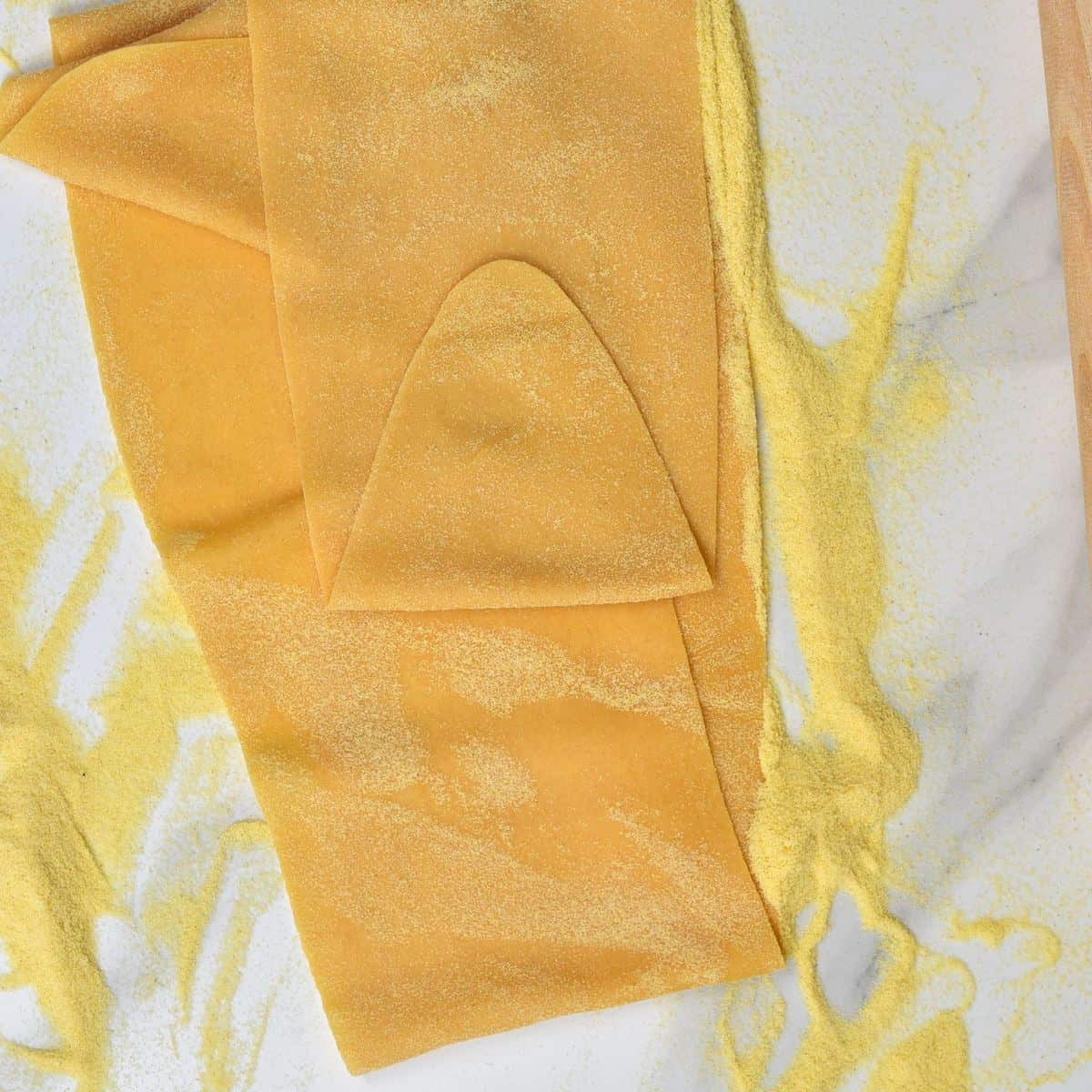How to Make Homemade Pasta (Egg Pasta)
5.0
(4)
Your folders
Your folders
Prep Time: 22 minutes
Cook Time: 3 minutes
Total: 40 minutes
Servings: 6

Ingredients
Export 3 ingredients for grocery delivery
Instructions
Step 1
Place the flour on a clean working surface, create a well in the middle, and then add the eggs to the well.
Step 2
Start by beating the eggs with a fork or spoon in the center, and then slowly start to incorporate the flour into the egg mixture until you have a very rough ('scraggly' as I call it) dough. Read the FAQs for doing this process with a stand mixer/food processor.
Step 3
Once you have a rough dough, knead it with your hands, making sure to stretch and pull the dough until it becomes smooth and elastic. This process will take a while, so be patient- it usually takes me around 10 minutes.While kneading the dough, it may initially feel like you need more water or flour but don't add in anything yet – just keep working with it. If it continues to stick to your hand even when smoother-looking, you may need an extra spoonful of flour. If it's still a bit crumbly, then add a spoonful of water.
Step 4
Allow the dough to rest for 15 minutes, wrapped tightly with plastic wrap. Once rested, it should be soft and tender, and easy to work with.
Step 5
Meanwhile, as it rests, you can prepare your tools for shaping the homemade pasta dough, including:Extra flour to dust the surface, or use semolina (semola flour)EITHER a rolling pin or pasta machine (if you have one)Knife or bench scraper to cut the dough.Kitchen towel to cover the rolled egg pasta sheets so they don't dry.
Step 6
Once it's rested, divide the dough into 4-6 pieces (these will be easier to work with).
Step 7
To shape the pasta, you'll then be using one of three methods: using a rolling pin, a pasta machine, or a pasta extruder.
Step 8
If you use a pasta extruder, then simply feed the dough into the extruder, press it through, and toss with a little extra flour/ semolina to make sure they don't stick.The shapes you can make will depend on what disks you have for your extruder but will often contain several diameters of round noodles and flat noodles (like the flat ribbon noodles used for Pad Thai) and certain tube-shaped pasta too.
Step 9
Use the rolling pin to roll out the dough as thin as it will go. In most cases, we want the egg pasta to be between 2-3mm.
Step 10
Hand-rolled pasta (and pasta sheets) are great for when you want to make pasta including:Lasagna sheets, Pappardelle, Tagliatelle, fettuccine, Ravioli, Tortellini, Farfalle, Orecchiette, cavatelli, etc.
Step 11
For wide homemade pasta noodles (aka ribbon, pappardelle, etc.):Once you've rolled out your sheet, cut it to the length you want your noodles to be, trimming off the ends for a rectangular piece (those discarded pieces can be re-rolled).Roll the pasta up, loosely, from the shorter end of the rectangle, then use a sharp knife to cut along the rolled-up sheet to the width of the noodles you want. Unroll the pasta, and those are your noodles.
Step 12
For Lasagna Sheets:Once you've rolled out the dough, then use your measured bench scraper or a ruler to help measure and cut the lasagna sheets to size. Making them homemade means you can fit them perfectly into any baking dish you own!Use a sharp knife or pizza cutter to cut out the sheets. Feel free to hold the ruler in place over the pasta to cut straight lines.Chef's note: You can also make laminated pasta (where you layer two sheets of pasta with herbs or ingredients between)
Step 13
Once you've divided the dough, flour one piece (liberally) and roughly flatten it by hand, thick enough to fir the first setting of your pasta machine (usually '0').
Step 14
Feed the pasta through the machine and then fold it like a letter (to fit inside an envelope- one side over the other) and repeat 3 more times.
Step 15
Then pass the dough through each setting, slowly making it thinner until you reach your desired thickness.If the dough starts to feel tacky at any point, then sprinkle a little more flour over it.
Step 16
You can then hand cut lasagna and any of the pasta varieties mentioned above. Alternatively, most pasta machines will also come with separate attachments for spaghetti and slightly wider (Fettucine) noodles.
Step 17
If you're wondering how long to cook egg noodles, it will depend on whether they are fresh, frozen, or dried. To cook fresh egg noodles:Bring a pot of salted water to a boil over medium-high heat, then add in the egg pasta and stir it immediately. This will help it to avoid sticking together.Fresh pasta will cook faster than dried, so keep an eye on it. The exact time will depend on how thick it is and what type of pasta you've made (i.e., ravioli vs. noodles). However, it's usually ready in less than 3 minutes!!Strain the pasta – the leftover salted pasta water can be frozen to add to stocks, soups, and sauces.Note that if you freeze or dry the pasta, then the cooking time will increase. Add an extra 1-2 minutes for frozen egg pasta and an extra 2-4 minutes for dried egg pasta.